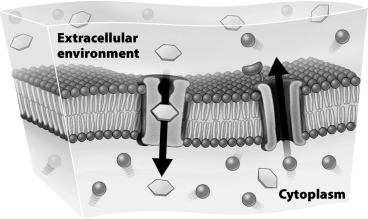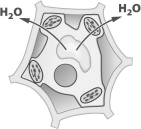Course
Introductory Biology
Study Pack
Set 7 Cell Membranes Transport And Communication
Question 1
(Multiple Choice)
Free
Imagine two solutions separated by a selectively permeable membrane that is impermeable to glucose. On one side of the membrane, solution A contains 10 percent glucose and on the other side, solution B contains 25 percent glucose. Which of the following is true?
A)Solution A is hypertonic relative to solution B.
B)The concentration of water is greatest in solution B.
C)Water will move from solution A to solution B.
D)Glucose will diffuse from solution B to solution A.
Answer
Question 2
(Multiple Choice)
Free
The figure below shows the movement of solutes across a plasma membrane in the direction indicated by the arrows. 
This movement across the membrane

This movement across the membrane
A)requires a direct input of cellular energy.
B)occurs independently of carrier proteins.
C)occurs by diffusion.
D)is an example of osmosis.
Answer
Question 3
(Multiple Choice)
Free
The arrows in the figure below show the movement of water across the cell wall and plasma membrane of a plant cell. 
For water to move in the direction indicated, the solution surrounding the cell must be

For water to move in the direction indicated, the solution surrounding the cell must be
A)hypertonic.
B)hypotonic.
C)isotonic.
D)selectively permeable.
Answer